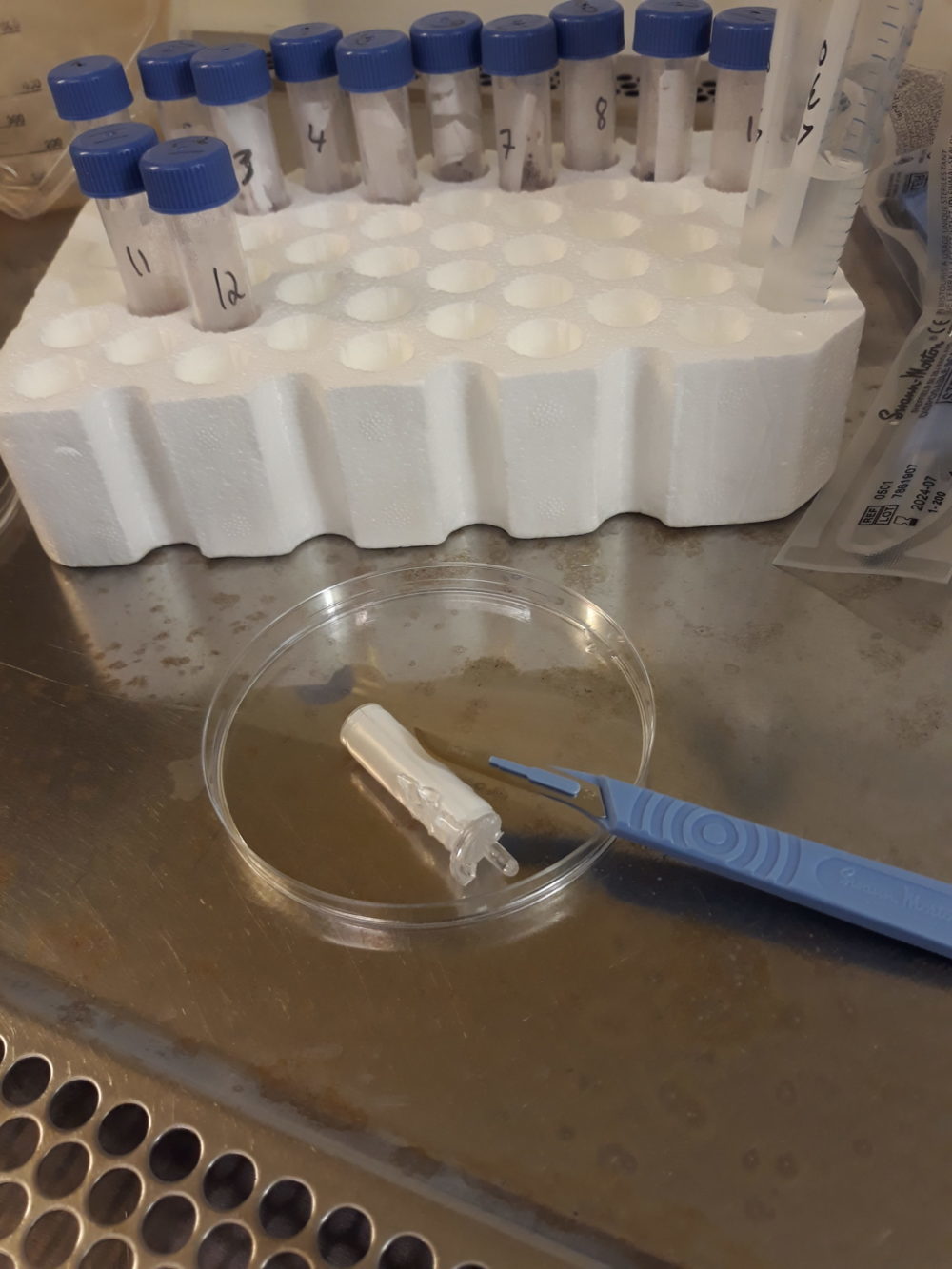Science Blog: Can deep crystalline bedrock environments tell us where to look for life on Mars?
Astrobiology is an interdisciplinary field of science, where astrophysics meets molecular biology and hydrogeology meets exoplanetology. The most important scientific questions in astrobiology concern the origin and early evolution of life, i.e. how did life first emerge on Earth, where and why, could this have happened or will it happen elsewhere, is there actually life outside Earth and how can we detect it? As the origin of life and possibilities of life existing on other planets are still impossible to study in situ, astrobiological research relies heavily on environments here on Earth that resemble the potential environments on other planetary bodies. In a recent study (Purkamo et al. 2020), the ultradeep subsurface was investigated as an analogue for the deep subsurface of Mars or Jupiter’s moons, such as Europa. The deep subsurface environments on Earth characteristically exhibit a large water–rock ratio, a low amount of carbon and other nutrients, and high temperatures, salinity or even radiation. A similar combination of extreme conditions is expected to be present in the deep subsurface of other planetary bodies (Jones et al. 2018, Preston & Dartnell 2014).
The deep continental biosphere has been investigated in Finland and across the globe. Bacteria are the most abundant microorganisms found, but archaea and fungi have also been detected. Gases originating from the surrounding geological environment, such as hydrogen and carbon dioxide, are the initial driving force of these microbes (Pedersen 1997). A recent study investigated the limitations to life in deep crystalline bedrock, examined the microbial ecosystems existing at great depths and the metabolic potential of the microbes in multi-extreme conditions. The Pyhäsalmi mine and Otaniemi drill holes (which will form the deepest geothermal heat production plant in the world when finished) provided fluid and rock samples from which we were able to study the microbes using DNA-based methods.
Rock chippings from drilling with an air hammer were collected from depths of 2–4.4 km at Otaniemi, while from Pyhäsalmi, pressurised fluid emerging from a 2.4-km-deep drill hole inside the mine were sampled for the study. Biomass was collected from the samples and the DNA of the community was extracted. State-of-the-art DNA sequencing methods were used to reveal the community composition (phylogenetic marker genes) and the functional potential of the community (metagenomics), and some specific functional groups of microbes (sulphate reducers, nitrate reducers and methanogens) were also quantified.
Diverse bacterial communities were detected from the two locations in this study. The deepest microbial signals were retrieved from a depth of 4.4 km, although the cell numbers were very low. The samples contained a few tens to some hundreds of bacterial cells per gram or millilitre, and archaeal and fungal signals were even lower. An Alkanindiges-related gamma-proteobacterium dominated the Pyhäsalmi fluids, while Pseudomonas-related bacteria were more common in the crushed rock samples retrieved from Otaniemi up to 4.4 km depth. Several microbial community members could not be placed in the bacterial family tree, i.e. we could not find any relatives of these from published databases. This highlights the fact that the deep subsurface of the Earth is still rather unknown territory itself in the case of microbial life.
Many bacteria found were relatives of microbes known to exhibit chemoheterotrophic metabolism. In addition, the participation of the recorded microbes in nitrogen cycling was evident from the data. Thus, the study could guide future space missions in the quest for life signs on other planetary objects. Such missions could aim at detecting heterotrophic signatures in addition to the products of autotrophic metabolism. If these missions are ever successful, we could compare deep life in Mars to deep life on the planet Earth.

References:
Purkamo, L.; Kietäväinen, R.; Nuppunen-Puputti, M.; Bomberg, M.; Cousins, C. Ultradeep Microbial Communities at 4.4 km within Crystalline Bedrock: Implications for Habitability in a Planetary Context. Life 2020, 10, 2
Jones, R.M.; Goordial, J.M.; Orcutt, B.N. Low energy subsurface environments as extraterrestrial analogs. Front. Microbiol. 2018, 9.
Preston, L.J.; Dartnell, L.R. Planetary habitability: Lessons learned from terrestrial analogues. Int. J. Astrobiol. 2014, 13, 81–98.
Pedersen, K. Microbial life in deep granitic rock. FEMS Microbiol. Rev. 1997, 20, 399–414.
Text: Lotta Purkamo
Lotta Purkamo completed her PhD at VTT Technical Research Centre of Finland in 2016, after which she worked at the University of St Andrews, Scotland, for two years as a Research Fellow on a project entitled “Limits of life in deep Fennoscandian bedrock: implications for the origin of life on Earth and beyond”. She has worked at GTK since 2018, carrying out hydrogeochemical and microbiological research. Currently, she is coordinating her postdoctoral project on the interplay between methane, microbes and black schists, funded by the Academy of Finland.
